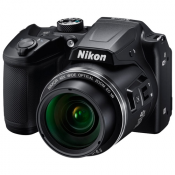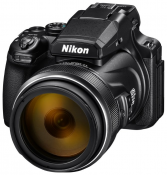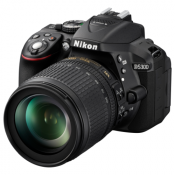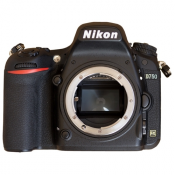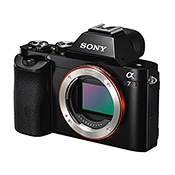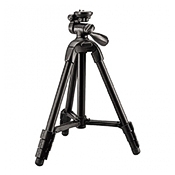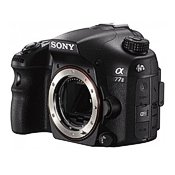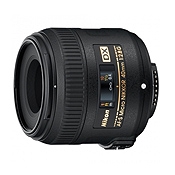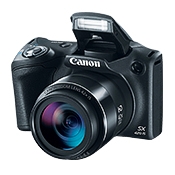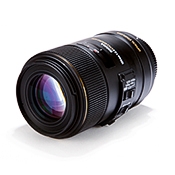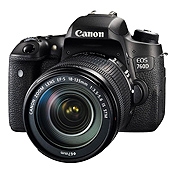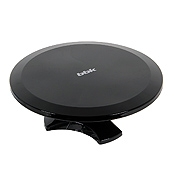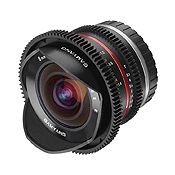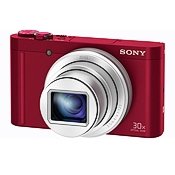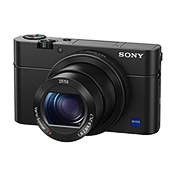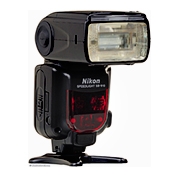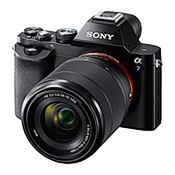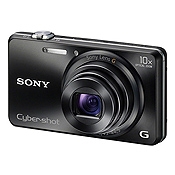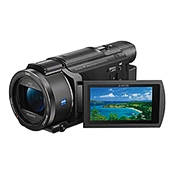Nikon Z 6 Kit
Short review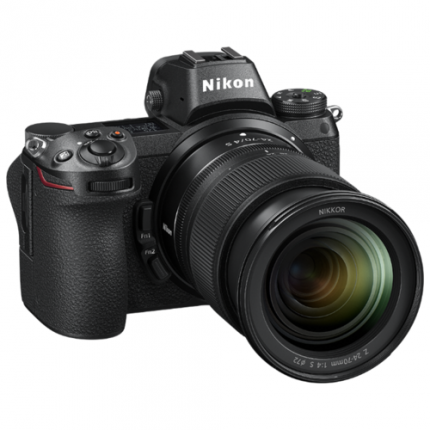
Buy Nikon Z 6 Kit
Nikon Z 6 Kit Specifications
Yandex.Market data
| Camera | |
| Camera type | mirrorless interchangeable optics |
| Lens | |
| Interchangeable lens support | Nikon Z mount |
| Lens included | there is |
| Matrix | |
| Total Pixels | 25.28 M |
| Effective Pixels | 24.5 million |
| The size | Full frame (35.9 x 23.9 mm) |
| Crop factor | 1 |
| Maximum resolution | 6048 x 4024 |
| Matrix type | CMOS |
| Color depth | 42 bit |
| Sensitivity | 50 - 3200 ISO, Auto ISO |
| Extended ISO values | ISO100, ISO6400, ISO12800, ISO25600, ISO51200, ISO102400, ISO204800 |
| Matrix cleaning function | there is |
| Functionality | |
| White balance | automatic, manual, from the list, bracketing |
| Flash | red-eye reduction, shoe, bracketing, i-TTL |
| Image Stabilizer (Still Image) | optical, matrix shift |
| Shooting modes | |
| Shooting speed | 12 fps |
| Timer | there is |
| Timer running time | 2, 5, 10, 20 s |
| Time-lapse mode | there is |
| Aspect ratio (still image) | 3:2, 1:1, 16:9 |
| Viewfinder and LCD | |
| Viewfinder | electronic |
| Using the screen as a viewfinder | there is |
| Viewfinder field of view | 100% |
| Viewfinder Pixels | 3690000 |
| LCD screen | 2,100,000 dots, 3.20 inches |
| LCD screen type | swivel, touch |
| Second screen | there is |
| Exposition | |
| Excerpt | 30 - 1/8000 s |
| X-Sync shutter speed | 1/200 s |
| Manual setting of shutter speed and aperture | there is |
| Automatic exposure processing | shutter priority, aperture priority |
| Exposure compensation | +/- 5 EV in 1/3-stop increments |
| Exposure metering | 3D color matrix, center-weighted, spot |
| Exposure Bracketing | there is |
| Focusing | |
| Autofocus type | hybrid |
| Focus points | 273 |
| AF illuminator | there is |
| Manual focus | there is |
| Electronic rangefinder | there is |
| Autofocus correction | there is |
| Face Focus | there is |
| Memory and interfaces | |
| Memory card type | XQD |
| Image formats | JPEG (2 levels compressed), TIFF, RAW |
| RAW + JPEG recording mode | there is |
| Interfaces | USB 3.0 with charging support, HDMI, mic-in, headphone-out, Wi-Fi, Bluetooth |
| Food | |
| Battery format | your own |
| Number of batteries | 1 |
| Battery capacity | 310 photos |
| Power connector | there is |
| Video and sound recording | |
| Video recording | there is |
| Video recording format | MOV, MP4 |
| Video codecs | MPEG4 |
| Maximum video resolution | 3840x2160 |
| Maximum video frame rate | 120 fps |
| Maximum frame rate when shooting HD video | 120 fps @ 1920x1080, 25/30 fps @ 3840x2160 |
| Video recording time | video file size 4 GB or 29 minutes |
| Sound recording | there is |
| Recording audio comments | there is |
| Other functions and features | |
| Additional features | tripod mount, remote control, computer control |
| Dimensions and weight | |
| The size | 134x101x68 mm, without lens |
| Weight | 585 g, without batteries |
Nikon Z 6 Kit reviews
Yandex.Market data
Advantages:
About the agony of choice below, but for now immediately to the pluses: 1. Compact size and weight. This is what my back needs. 2. Very comfortable ergonomics, the camera just fits in the hand (and I don’t want to let go) 3. A chic lens for its class 24-70 / 4 (sharp, compact, fast). 4. Excellent viewfinder. The best solution. 5. A clear roadmap for the lenses 6. I was impressed by the battery life. According to CIPA, this is about 330 frames, but in fact, 500-1200 frames are quite successful. And there is an opportunity to recharge via USB 7. A huge list of optics 8 is available through the adapter. From what I tried, I really liked the S = 35mm and 50mm lenses. I want to buy both. Very compact and sharp.
Disadvantages:
one.One slot for memory cards and that XQD. I don't think that having finished the spare SD the manufacturer would have lost much of its compactness. But photographers would say THANK YOU 2. Not the most intelligible AF, especially in tracking mode. I really hope that they will finish with the firmware. 3. In order to flash the camera, I had to buy a card reader. What for?? For XQD, there are not many of them on the market - expensive ones from Sony for 4-7 thousand or from Delkin for 3-4 thousand. In the end, I bought it for 900 rubles on Aliexpress.
Comment:
My path to the Z6 has been a thorny one. In 2000x, I was choosing between Nikon and Canon. Chose Nikon. There were cameras D50, D90, D300. Overgrown with optics, but in 2013, I realized that I take a DSLR with me less and less, and decided to change the system to a full-frame UPC Sony, which had just announced its first A7. I spent a year on the Sony system and sold it when I heard the prices for the announced lenses. And the system was still raw, without the famous stub and AF for the eyes. Upgraded to an even more compact solution from Olympus. Four years on m4 / 3 was a blessing. An excellent system - not expensive, very compact, convenient. But there is one thing - that, whatever the ambassadors of Olik would say, these are not working ISOs above 1000. The matrix is small and noisy. And it is difficult to scrape a picture normally. As a result of these throwing, I wanted to try a new product from Nikon. I bought Z6 + 24-70 / 4 The system is not without sin, it has its drawbacks (about the pros and cons above), but I am satisfied. Recommend. Compared to direct competitors: Sony A7m3 - Sony has the most gorgeous AF, but prohibitively expensive and not compact native optics, inconvenient ergonomics, overly sophisticated menu. Canon EOS R - no matrix stub (as a result, bulky and expensive lenses), weak battery, old sensor, expensive optics
14 November 2019, Moscow
Advantages:
- Very comfortable and ergonomic body - Bright and clear viewfinder - 7 programmable buttons - Excellent compatibility with old flash units (SB-800, R1C1). Fully compatible with SU-800 (Tom Hogan's review reports that SU-800 does not work with Z cameras - perhaps the firmware has solved this problem, I have firmware version 2.0, everything works) - Excellent compatibility (AF, stabilization) with most mount lenses F via FTZ adapter (there are exceptions - see disadvantages) - Kit lens 24-70 / 4 is fantastically perfect. But this is partly due to the non-switchable distortion correction option (removes distortion and vignetting). It is sharp and accurate throughout the range, and this cannot be taken away from it. - It is very convenient to work with manual lenses - but there is also room for improvement: - Lenses with manual focus can be entered into the database, assigned a number to each and entered the value of FR and min. f-number. This is a plus. But unlike Nikon SLR carcasses, the Z6 camera does not record the change in the aperture of AI-Ais lenses and does not write it in exif. Used only by phased array for matrix stabilization. It's still more convenient than in Sony cameras (you don't need to flip through all the focal points every time), but there is no limit to perfection.
Disadvantages:
- The function of increasing the focusing area is implemented strangely - it is convenient and it can be hung on the programmable buttons, BUT: only one preset value of magnification (50%, 100% or 200%) can be set on one button. Pressing the button again resets the magnification, but the magnification is not reset by half-pressing the shutter, as in the Sony a7r2, for example. I had to use three buttons to set three different magnifications - it's inconvenient. Ideally, the magnification should cyclically change when you press one button again (50% -100% -200% -reset) + reset the magnification when you half-press the shutter button. - One of my lenses (Sigma Macro 150mm f / 2.8, no OS) refused to work with this body, it cannot be used even with manual focus. It's funny, as it works well on a Sony a7r2 body with Commlite CM-ENF-E AF Adapter (1) AF Lens Adapter for Nikon F
Comment:
I bought this camera in addition to several of my other cameras,so that you can fully use F lenses and Nikon flashes on UPC with EVF and matrix stabilization. This camera has lived up to most expectations. I can compare with the Sony a7r2 - Z6 is more convenient in most parameters. Nevertheless, I am not yet ready to part with the a7r2 and replace it with the Z7 (analogous in resolution): the price of the Z7 is too high, and I also have Sony FE lenses that are absent in the Z system.There are few lenses native to this mount in the Nikon Z system. , but those that have appeared are impressive in their characteristics. Unfortunately, their prices compete with Sony's prices - they are just as high. However, I hope to make the Sony FE lenses related to the z6 camera using the Techart TZE-01 AF adapter - I have already ordered it, let's see what happens. The Z6 is a great choice for those looking to upgrade to an UPC from a Nikon DSLR system. For those who buy a BZK from scratch, this is just one of the good options - in some ways the best, in some not.
1 July 2019, Moscow
Advantages:
What can I say? The camera is just a bomb. I took for high-quality photographs of my family, in particular growing children and for travel. The camera is light and comfortable, I bought it in a set with 24-70 / 4 (below you can look at examples of pictures from a trip to the Primorsky Krai). Everything in it pleases at once. Tracking autofocus on the eyes and face constantly helps out when I take pictures of children for a walk, but they do not know how to stand still, and the pictures in motion are much more interesting and dynamic. It also works great in the dark, with ISO 1600 and 3200 a very good picture. Special thanks for the silent mode, children's matinees or shooting in the church are no longer a problem at all, no one is distracted by the "Clicking" of the shutter. Filmed a couple of times in a light rain - no problem. Slowly I'm starting to master the video, 4K looks very good (just a pity for a place on the computer). Due to the reduction in weight and ease of use, even the wife began to pick up the camera and shoot more often. I compared the viewfinder and screen with other brands in the store, I really liked the picture and the colors. And no flicker - super. The camera is top-end and the result is also very decent. True, you need to understand all the settings in more detail, I recently opened the Auto2 white balance, with warmer shades, for those who love atmospheric family and just kind warm pictures this is a godsend. I bought a 50mm / 1.8 S lens - the portraits are simply airy without a single hint of a focus miss or any other defects. Previously, there was an experience of 50 1.8G, the difference is just heaven and earth.
Disadvantages:
1. The most obvious is the XQD card. I hate to say bad words, but ... how did the manufacturer come up with this when everyone already has a bunch of SD? unclear. 2. Lenses, they are still few and expensive. I would like a shirik of 20-24mm, but it is possible with aperture of 2.0-4.0, but for a small price. Still, I want to have only 2 fixes 50 and 20-24mm, until I am ready to buy 3 lenses.
Comment:
As described earlier, the camera leaves only the most positive impressions. All the friends who took to try remained in wild delight, I think I will soon be able to convert them to my faith :))) I had doubts before buying due to the fact that the system is new, but now I don’t regret it. Good luck to everyone in your creative success.
October 18, 2019, Moscow
Advantages:
After six months of agonizing search for a worthy replacement for the Nikon d600, I made my choice ... I stayed in the Nikon system, choosing the Z6. The priority of the choice was the lightness and compact size of the camera, full frame and excellent video capabilities (yes, I got hooked on video lately). Compared to competitors in the Z6, I really liked the picture - it makes less noise, the acceptable iso for me is about 20,000! I hardly shoot in RAW. I turn off noise reduction and shoot in JPEG. The result is worthy. For those who have been at Nikon for a long time, there is probably no point in praising the menus and camera ergonomics. Z's grip is one of the best. The camera is comfortable to hold, especially with heavy lenses.It is not outweighed forward. When shooting video, a more stable picture is obtained with less shaking. Charging included. Old batteries are suitable. This is a plus. My old battery from d600 en-el 15 came up. I also really liked the touch screen. The Z-ke implements focus / tap-shooting on the screen (without using the shutter button). Cool stuff. Suitable for fans of shooting on iPhone)) There is touch menu navigation, you can also scroll and zoom in / out pictures on the screen (like in Nikon D850). The electronic viewfinder is one of the best among the competition. Minus, it is also a plus - competitors have a large fleet of optics ... with high prices. But with the FTZ adapter, you can easily screw on any optics of the F-mount. Again, in comparison with the main competitor, I was pleased with the stable operation of the wireless connection and the Snap Bridge mobile application. As a result, the camera turned out to be very decent!
Comment:
13 November 2019, Moscow
Advantages:
Small size and lightweight Movie quality Optical stabilizer Fast high-resolution JPEG shooting using autofocus JPEG color very pleasing Eye-focusing Excellent autofocus Old mount adapter
Disadvantages:
No built-in motorized focus (camera does not have a screwdriver) 1 memory card Viewfinder (slow switching between viewfinder and monitor)
Comment:
I took this camera primarily because of its small weight and size. I was pleasantly surprised by the very high quality autofocus. The hit at f / 1.4 is almost 100%, even with my old lenses via an adapter. Eye-focusing is impressive. I use it both in wedding photography and in sports photography. I did not notice any significant drawbacks - it is very convenient to use. Focus picking is worth mentioning separately - now you can use manual glasses and not be afraid to miss. Nikon took a very big step forward in the video. The picture quality just got better. Conclusion: This camera has become my main workhorse. Sharp shots, rate of fire, reliability. In the video part, this camera won me over. I practically stopped shooting a DSLR. But I'm not in a hurry to sell yet, I'll see how the Nikon z6 will behave over time)
December 10, 2019, Rostov-on-Don
Advantages:
The camera has interesting ergonomic solutions, a comfortable grip, balance when using large lenses. Finally, we added matrix stabilization, this function was really lacking when using the SLR D610, the presence of an adapter for mirror lenses in the kit. Having a normal wi-fi receiver, you can upload pictures to your phone without stopping to shoot. The new 35 mm f1.8 lens released for the new mount is above all praise, excellent sharpness across the entire field of the frame, it's a pity of course that it is f1.8, but I have suspicions that if it were f1.4 then it would be the size of a bucket , after which all claims to the released lens disappear immediately. I also like its rate of fire, a great help when shooting a reportage, on the D610 it was difficult in this regard. High working ISO, on average everyone talks about a working value of 2000-2500 ISO, but from my own experience I can say that ISO can be safely raised to 4000-6000 ISO (I will attach examples of pictures) Fast work with mirror lenses when using an adapter. Precise auto focus
Disadvantages:
A small battery, on average, lasts for 900-1200 shots, but this problem is solved by the presence of a portable charger, which I already carry with me on shooting. XQD card, but I would not say that this is a direct problem, given that the card has excellent speed and I got the card as a gift at the time of purchase (at the time I bought, they came with the camera). 64 gb was always enough for me, because when shooting reports, I mostly shoot in jpeg and don't write frames in raw, that's enough for a shooting day.
Comment:
Yandex will compress the photos that I upload, but even on them you can still see that on high ISOs the camera feels great and produces a normal picture. One shot is 6000 ISO, and the second is 5000 ISO
December 12, 2019, Moscow
Advantages:
Compact size Full sensor High speed autofocus Extremely high working ISO 14 bit format at 24MP (not like the D850 at 45MP),
Disadvantages:
Long camera loading for the first shot Only XQD flash cards (fast, but expensive - on the other hand, they are the future) - worry about the card reader At the time of purchase - May 2019 does not work with Tamron lenses Swivel screen worse than D750 and D850 ( when shooting over the crowd, there is no parallelism) Quickly sets the batteries (1 is enough for up to 1000 shots)
Comment:
Those who rushed to switch to mirrorless for a long time - our time has come: Why not Sony - expensive lenses Why not Fuji - crop (physics can not be fooled - 100% fact) After d700 I was looking for a worthy replacement - d750 turned out to be very buggy in working with flash drives, d850 is quite weighty and expensive (the lack of a flashlight complicates work in the dark), also work in 14 bit only in 45mp (S & M RAW - 12 bit) Subscribe and contact on instagram @ glazok90
May 31, 2019, Smolensk
Advantages:
- Bright viewfinder, considering that this is usually just a small monitor built into the camera, this monitor at least does not flicker and displays the picture correctly. - The presence of Wi-Fi, but this can hardly surprise anyone, but you can still surprise with a well-implemented function of controlling the camera from a smartphone. - Matrix stabilizer - Familiar ergonomics and buttons all remained in place - Touch screen - Image quality
Disadvantages:
- XQD card, but in general it is a disadvantage with which you can live, you just need to buy a card reader - Relatively small battery in the camera, yes, so we pay for the compactness, but we would like the camera to keep the charge longer.
Comment:
Mostly at work, I shoot with a mirror, as I constantly work in the studio and do product photography. In the studio, my kit completely suits me and the same D850 will serve me for another 5-6 years, for sure. But whenever I went abroad for a vacation, I was always afraid to take a full-frame camera with me due to the safety issue, and to be honest, it is hard for me, as a fragile girl, to carry the D850 outside the studio. I didn't want to take any crop for trips, a good crop is not cheap, and the picture quality of cropped cameras never impressed me. Thinking and thinking for a long time, almost before the trip I decided to take the Z6 with a universal lens in the kit. Over the past 3 months of use, I can say that I have become convinced that mirrorless cameras, in principle, have finally reached satisfactory build quality and technical characteristics, again, on trips I can safely shoot at ISO 3000-5000.
December 27, 2019, Moscow
Advantages:
Very cool image quality! Even jpeg at high ISO! The quality of the viewfinder and screen is excellent. Built-in stub that really works. Fits comfortably in the hand.
Disadvantages:
Few where a reader for XQD cards is sold, I ordered it from Ali.
Comment:
Really working ISO 12800. Easy to work with in lightroom with this camera, although to be honest, I like jpeg! I bought another 50 1.8S, very sharp, the picture is bombing from it) The display is a separate topic, the sensor works like on a good smartphone, the camera can be controlled through the display. The built-in stub works very well, I shot at 85mm at a shutter speed of 1/30 handheld - everything is fine.
January 14, 2020, Moscow
Advantages:
Several months Benefits High resolution of the viewfinder and screen, the presence of a matrix stabilizer, fits comfortably in the hand, cool jpeg, color rendition, minimum noise at high ISO, convenient smartphone application.
Disadvantages:
Xqd map
Comment:
A well-assembled camera with convenient controls. I shoot both photos and videos. Lots of features in the settings. For example, you can change the focusing speed for photos and videos, there is a separate menu for video shooting, etc. I liked the control through the display, the sensor does not lag.
January 22, 2020, Moscow
